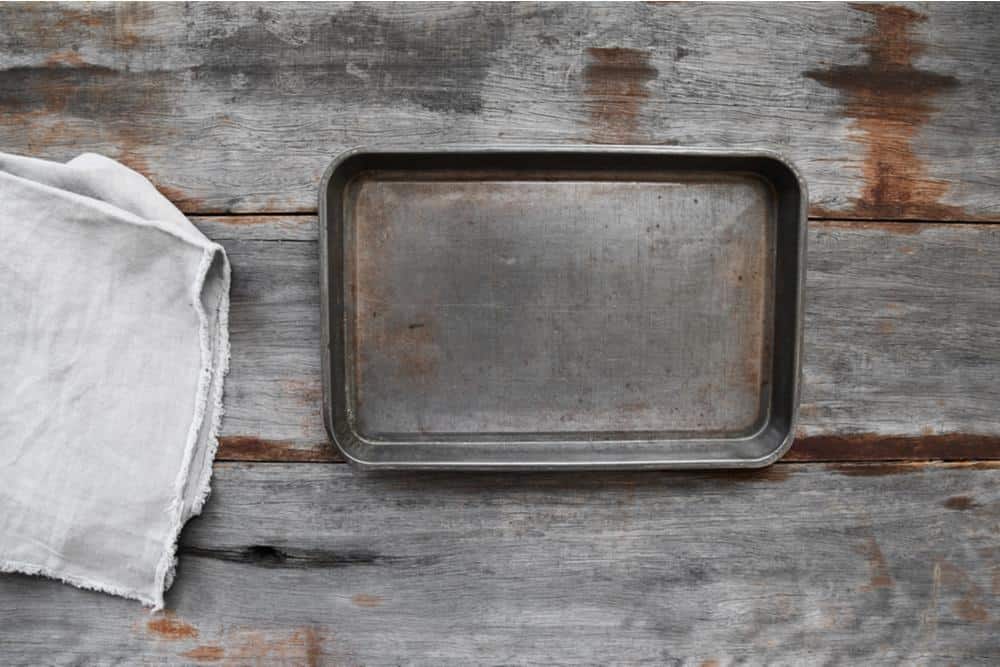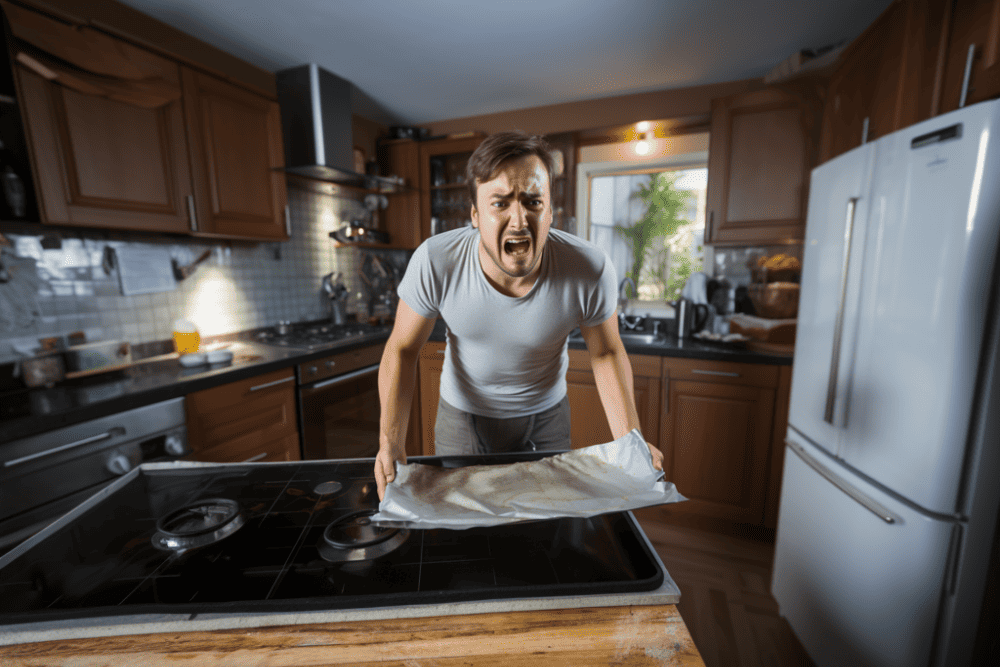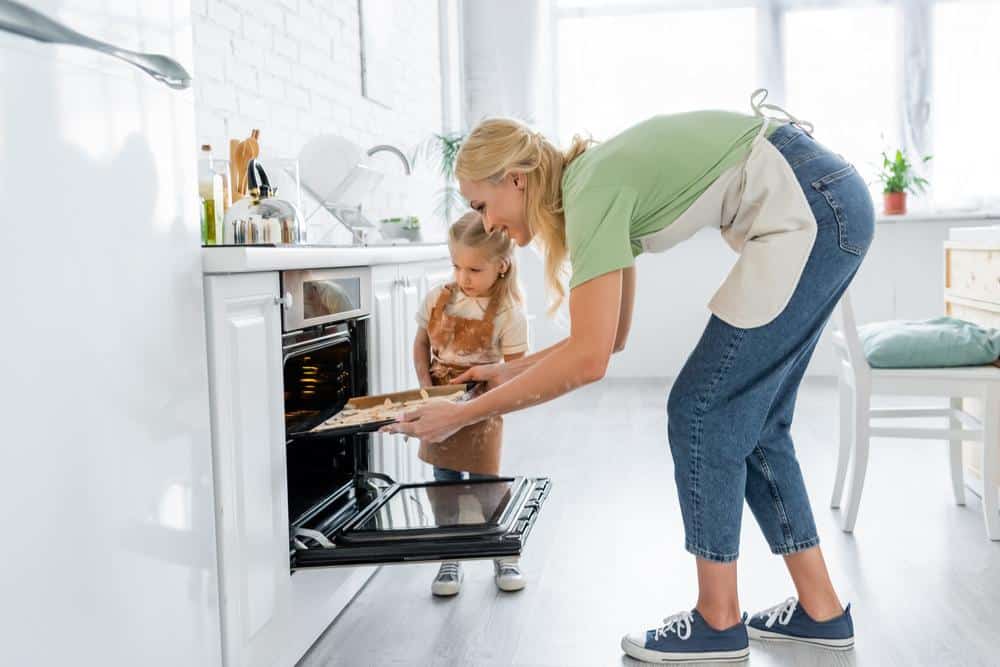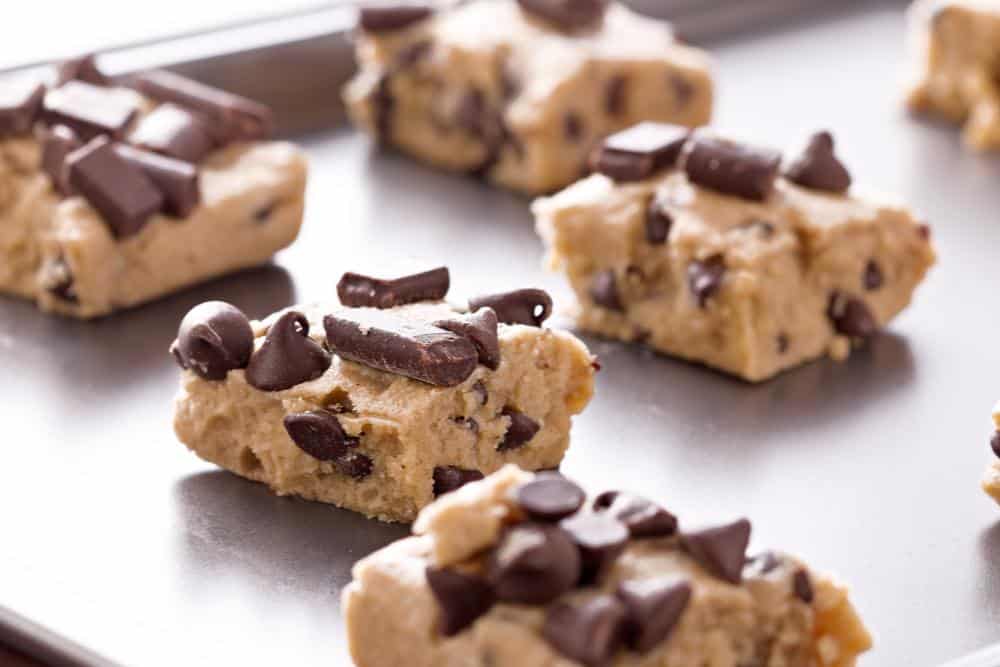Whether you consider yourself a veteran baker or stick to pre-made cookie dough on a cookie sheet, your baking tools make a difference. One of the primary instruments for baking is the baking sheet pan.
While it may seem as though all baking pans are created equal, some do the job better than others.
Baking pans vary in thickness, material, and temperature tolerance. If you plan to bake often, you may need more than one sheet in your collection.
According to the Nordic Ware Official Website, Their Nonstick Naturals Aluminum Bakeware has Encapsulated Galvanized Steel Rims to Prevent Warping
But what happens when that baking pan you thought was a great purchase ends up bending and warping in the oven?
If you have ever experienced a warped baking sheet pan, you know the frustration of pulling your freshly-baked goods out of the oven and having them look less-than-stellar. Below are some tips, tricks, and reasons why your baking sheets keep warping in the oven.
The primary contributing factor to warped baking sheets is the thickness of your pan. A hot pan will begin to expand, and heat is not always evenly distributed.
A thin pan warps in high temperatures because they do not have enough metal for proper distribution of the heat.
 Thin, aluminum baking sheet pans are much more likely to warp than thick stainless steel when exposed to extreme temperatures.
Thin, aluminum baking sheet pans are much more likely to warp than thick stainless steel when exposed to extreme temperatures.
Additionally, when items expand as heat is applied, they may not grow at the same rate. If you have a baking pan, one corner of the pan may enlarge faster than the others.
If you hear a popping sound coming from your oven while baking, your pan is likely expanding unevenly.
When you turn on the preheating function on your oven, your pan (if on one of the oven racks) will endure several high temperatures simultaneously.
If you place the pan in the oven following preheating, the pan launches from room temperature to extremely hot in seconds. This sudden change can affect if the pan will warp and bend.
This process of materials being exposed to rapid temperature change is called thermal shock. With glass bakeware, this can result in the pan shattering.
Exposing a cold pan or room temperature baking sheet to high heat can result in the metal warping and bending.

A Metal Baking Sheet Can Warp Due to a Variety of Causes - Cheap or Thin Materials and Sudden Temperature Changes are the Biggest Culprits
This same process applies when you have hot cookware and you expose it to cold temperatures quickly. You can damage or destroy your cookware.
The popping sound signifies that the pan is intolerant to the heat in the oven. Upon removal, you will likely notice your pan has uneven sides or a bubbled-up appearance. It may also bend without difficulty when you pick it up or arch in the middle.
If you only hear the popping sound once, your pan should survive the baking process. But if you observe it multiple times, your pan is more likely to crack, leading to further issues later on. A cracked pan can cause your baked creation to fall into your oven and burn.
Technically, yes. You can use a bent or slightly warped baking sheet pans in the oven, especially if you only hear one popping sound during baking.
However, you will likely have varying degrees of doneness throughout your food, which is frustrating - and potentially dangerous.
If you choose to use a warped pan, ensure you check on your baked goods regularly to prevent burning or undercooking.

It is safe to use a slightly warped aluminium baking sheet (or stainless steel) - but don’t use cracked cookware
Never use a cracked pan - this applies to both stovetop frying pans and baking sheet pans that go in the oven. Food can end up at the bottom of your oven and become a fire hazard or emit unpleasant smells.
It is not worth devoting time to perfecting a recipe just to put it on a cracked sheet!
If your baking tray or other cookware becomes bent with puffed middle or oddly shaped corners, that can also lead to uneven heat distribution and under or over-cooked foods.
Having an even distribution of heat is the key to baking the perfect cookies or potatoes in your oven.
If the heat does not distribute evenly, half your cookies may come out burnt, while the other half will come out doughy and nearly raw.
If your pan only warps slightly, it is likely to get a few more uses out of it - depending on what you bake. For example, if the corner of one side turns up or down slightly, there is no reason to throw it out just yet.
Otherwise, if your pan shows excessive warping in various places, it is best to toss it out and purchase a new one.
Warped baking pans are sometimes inevitable, but prevention is possible. When considering how to prevent your pan from bending and deforming in the oven, there are a few factors to consider, such as thickness, metal, and maximum temperature capabilities.
Finding a high-quality pan does not mean you have to break the bank - there are plenty of affordable options available.
There are many types of baking pans on the market, and some are more susceptible to warping than others. Pans with rolled edges are usually thicker, which means they may be less likely to warp in the oven.
If you decide to go with a classic sheet or half sheet pan, it is highly likely it may distort and bend while baking.
Another aspect that plays a part is when your baking tray is too thin, it is more likely to bend and warp in the oven than a thick baking tray. A good test for thickness is if you can flex it with your bare hands.
If you manage to bend the sheet, the metal is likely too thin to survive oven temperatures without warping. Some pans are naturally more pliable than others, but most should not fold easily over themselves.

Thicker, stainless steel baking sheets are the best bet to not warp
A helpful rule of thumb for choosing the best baking sheet is the thicker, the better. Baking sheets come in a range of thickness levels displayed by gauge numbers.
For the most part, if you get a pan between 10-18 gauge, it should be safe from warping and bending in the oven.
Baking pans also come in various materials, like stainless steel and aluminum. Stainless steel is your best choice for durability because stainless steel is dense and tolerates high temperatures better than its counterparts.
Aluminum is lighter and more flexible, making aluminum baking sheets more susceptible to warping.
While choosing the right thickness and material are important factors, you should also analyze how (and what) you bake. When using a baking sheet, you should ensure whatever you are cooking spreads evenly across the surface.
Food scattered around the pan causes some areas to heat more than others - leading to warped pans.
Another good rule of thumb to prevent warping is heating pans gradually rather than placing them into the hot oven at room temperature. When you heat the pan progressively, the metal slowly warms up and regulates its temperature.
This process prevents the shocking climate change from bending your baking sheets.
Your baking pan may have come out of the oven looking with some dents, but do not worry - there are ways you can try to unwarp your baking sheet.
However, if you purchased your sheet with a warranty, even better, as you can use the guarantee to get a replacement.
Assurances customarily expire after a year, so check your receipt before requesting your new pan.
If you are in a time crunch and need your cookies baked ASAP, you may not have the means to wait for a replacement. If you want to DIY-fix a bent pan, a mallet and some heat are your best bet.
You can use a hammer to shape the pan back into place as much as possible. Before hammering it back into place, you will need to preheat the pan for a decent amount of time to make it malleable.
Once the pan becomes hot, ensure you wear heat protectant gloves and an apron (just in case). After you have your gear on, get your pan into the correct position.
For example, if your pan faces upwards, you would place it right-side-up and point the corner down. If your pan turns down, you would position it upside down and use the mallet to pound the area back into place.
There is no guarantee that your pan will return to its fresh-from-the-store state, but you should be able to get it back to a usable form. Even severely warped pans usually respond well to the mallet and heat method.
If you purchase multiple sheets and each one becomes warped, you may have an oven issue on your hands. Before spending any more money, check for the following common baking sheet ailments:
Try adjusting your oven settings if your pans continuously react poorly during baking. You may also want to clean your oven between long baking sessions.
While there is no straight answer as to why your pan may be bending and warping in the oven, there are techniques you can use to ensure it does not warp further - so your homemade baked goods come out perfect every time.
